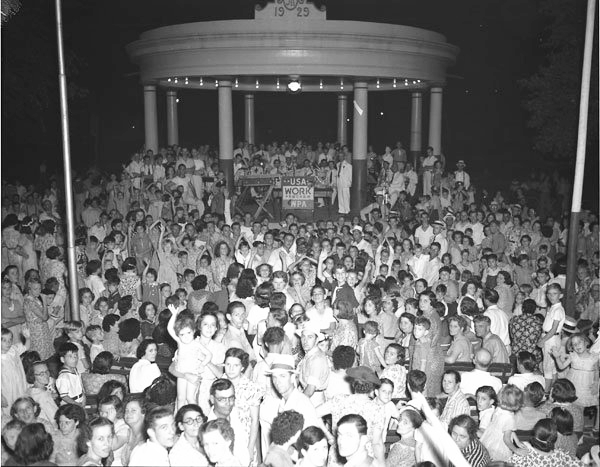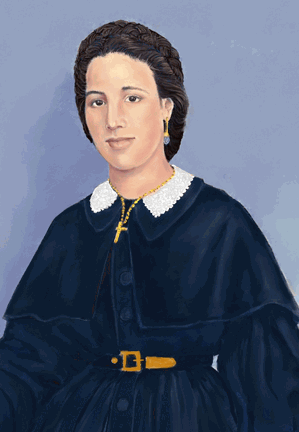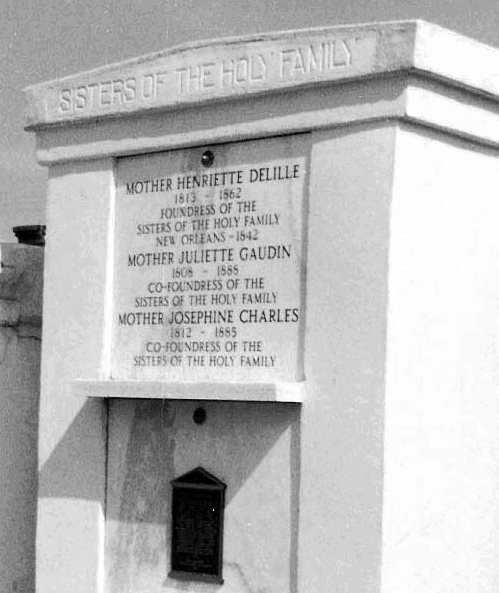|
Today in New Orleans History |
|
|
June 10


 Most WPA projects were carried
out by local and state governments using funds provided by Washington. Several projects were administered directly by the
federal government, including the Art, Music, Theatre, and Writers' projects. The bulk of WPA spending went toward the construction
and maintenance of the nation's infrastructure. Smaller amounts funded educations, recreational, and cultural activities.
In Louisiana, state headquarters of the WPA was located in New Orleans. The agency also operated district offices around
the state. In 1939 the program's name was changed to Work Projects Administration. On December 4, 1942, the president ordered
an end to WPA activities as the nation's war effort eliminated most of the unemployment that the agency had been designed
to combat. WPA projects in the Crescent City ranged from street paving and bridge building to bookbinding and adult
education. A considerable amount of the agency's varied activities in New Orleans and throughout the state was documented
by WPA photographers. This collection is the product of their work.  

To receive an update for each day in New Orleans
history, join our facebook page
- Today in New Orleans History
Tweet
Front page news in the Daily Picayune on September 28, 1911 announced the arrest of Miss
Annie Crawford, 28 year-old resident of 1011 Peters Avenue, for the poisoning of her 24 year-old sister Elise at their home.
on September 23. Elise had been ill for quite some time before her death. The Crawford family had
lost three family members within the past 15 months. On June 25, 1910, another sister, Mary Agnes Crawford died
suddenly -- the cause of death was attributed to Acute Meningitis. Three weeks later on July 15 her
father, Walter C. Crawford passed away -- the cause of death was allegedly Uremic
Poisoning. Two weeks after that, on July 29 her mother died -- it was thought that she also succumbed
to Uremic Poisoning. Upon the death of Elise suspitions were raised that the family
might have been victims of murder. Out
of work since losing her job, it was determined that she was the
insurance beneficiary of each deceased family member; Mary Agnes was insured for $300, her father for $800,
her mother for $800, and her sister Elise for $250. Another sister, Gertrude,
said "I don't want Annie to nurse me if I ever get sick. She gives such funny medicine".
District Attorney St. Claire Adams said, "It was established today the that Annie Crawford
is a drug fiend and probably is addicted to morphine. It is also established that she had
access during the past three weeks to morphine and was in a position to obtain it in practically
any quantity. During the indisposition of Elise Crawford she bitterly complained that her
food and drink were drugged. I have charged Annie Crawford with the murder of her sister Elise". The
case came before the Grand Jury on October 10 and Annie Crawford was indicted. On March 13, 2012 the began and she pled
not guilty. She had admitted to poisoning Elise with morphine capsules but said that she accidentally administered the wrong
medication -- she thought she had given Elise calomel tablets which she had purchased at Waldorf's
Pharmacy. She also admitted to being a morphine addict. Elise's body was, once again, exhumed for further
examination. Laboratory slides harvested from her organs were brought to the courtroom as evidence. Annie's attorney
Lionel Adams exclaimed that this was a "macabre display" while District Attorney St. Claire Adams objected.
Tempers flared and the two began to physically scuffle. While others in the courtroom attempted to quell the melee the
slides were pushed and went crashing to the floor. Annie was led from the room while fainting. During the trial,
professors from Tulane Medical School were called in as expert witnesses. Some opposed the opinions of others.
Tulane students aligned with the professor whose opinion favored Annie's innocence rushed to Parish Prison in an attempt to
carry her away. Police formed a ring of guards around the building and the students were barred from the courtroom. This
spectacular trial, which attracted national attention, ended as a mistrial on March 26, 1912 as a mistrial. The jury
had voted 9-3 in favor of an acquittal but were deadlocked and failed to reach a verdict. Anne Crawford was not
tried for the murder of her mother, father, or other sister because they had been buried
too long for current forensics to determine if they had been poisoned. On March 27, 1913, Elise's organs were
released to Annie and her remaining siste and reburied at St. Patrick's. The two sisters reported that they planned
to move to Port Arhtur, Texas. On June 10, 1912, Senator Schator Williams introduced a bill to prohibit
written and oral confessions of prisoners. Citing Annie Crawford's case as a "cruel example" of third
degree methods used by Distrct Attorney Adams' office as an example of coercive tactics, the bill passed with only one nay
vote. Thomas Semmes Walmsley (June 10, 1889 – June 19, 1942) was Mayor of New
Orleans from July 1929 to June 1936. He is best known for his intense rivalry with Louisiana Governor Huey P. Long. Walmsley
was born on June 10, 1889, to a prominent family in Uptown New Orleans. He was the son of wealthy cotton factor Sylvester
Pierce Walmsley and his wife, the former Myra E. Semmes. He attended Spring Hill College in Mobile, Alabama, and then Tulane
University in New Orleans, where he was a student athlete. In 1912, he graduated from Tulane University Law School. After
graduation, he became a lawyer for a New Orleans firm. On April 15, 1914, he wed the former Julia Havard of New Orleans,
and the couple had one daughter, Augusta, later Mrs. Frederick J. King. He served in the First World War as a major in the
United States Army Air Corps, forerunner of the Air Force. From 1919-1924, Walmsley served as an assistant attorney general
of Louisiana. In 1925, he was appointed city attorney by Mayor Martin Behrman, and he became a prominent figure in Behrman’s
Regular Democratic Organization political machine. The Old Regulars helped him become elected as commissioner of public
finance from 1926 to 1929. In July 1929, Walmsley was appointed acting mayor of New Orleans to fill in for Behrman’s
successor Arthur J. O'Keefe, who resigned because of illness. (NOPL)
Born in New Orleans on June 10, 1833,
Pauline Cushman (Born Harriet Wood) was an actress and a spy for the Union Army during the Civil War. Harriet and her seven
brothers were raised in Grand Rapids, Michigan. In 1851 she returned to New Orleans to join the performance group New
Orleans Varieties. Later she would travel to New York where she would take the stage name Pauline Cushman. While touring
with a theatrical troupe in Union-controlled Louisville, Kentucky. By fraternizing with rebel military commanders, she
managed to conceal battle plans and drawings in her shoes, but was caught and brought before Confederate general Braxton
Bragg, tried by a military court, and sentenced to death. It is said that she was saved three days before her scheduled
hanging by the invasion of the area by Union troops. Some reports state that she returned to the South in her role as a
spy dressed in male uniform. She was awarded the rank of Brevet Major by General James A. Garfield and commended by President
Abraham Lincoln for her service to the Federal cause, and became known as "Miss Major" Cushman. By the end of
the war in 1865 she was touring the country giving lectures on her exploits as a spy. Pauline became popular enough to be
featured by P. T. Barnum, which perhaps explains why details of her story may well have become exaggerated. But because
her undercover activities on behalf of the government were secret, it also helps to explain the lack of corroborative information
about her life at this time. However, in 1865 a friend, Ferdinand Sarmiento, wrote her biography, Life of Pauline Cushman: The celebrated Union spy and scout. Comprising her early history; her entry into the secret service notes and memoranda.
In her final years, disabled from the effects of rheumatism and arthritis, she developed an addiction to pain medication.
On the night of December 2, 1897 she took an overdose of morphine, and was found the next morning by her
landlady. She was 60 years old. Her Civil War fame was recalled at her funeral, which was arranged by members
of the Grand Army of the Republic. "Major" Cushman's remains now rest in Officer's Circle at the Presidio's National
Cemetery in San Francisco. Her simple gravestone recognizes her contribution to the Union's victory. It is marked, "Pauline
C. Fryer, Union Spy." Source: http://en.wikipedia.org/wiki/Pauline_Cushman A New Orleans lady, born in 1813 to a wealthy
Frenchman and a quadroon free woman of color, who rejected the social norms of her times is now the first U.S. native-born
African American religious leader whose cause for canonization was officially opened by the Catholic Church.
Six years later, at the urging of Jeanne Marie Aliquot (an early
supporter of St. Augustine Church) and the counseling of Pere Etienne Rousselon (vica-general of the diocese), Delille
and Gaudin knelt publicly at the altar of St. Augustine Church on November 21, 1842 and pledged to
live in community to work for orphan girls, the uneducated, the poor, the sick and the elderly among the free people
of color, thus founding the Congregation of the Sisters of the Holy Family -- the second-oldest African-American congregation
of religious women. In 1843, catechism classes were conducted for adults and children on
St. Augustine's property at Bayou Road (now Governor Nicholls). Delille and Gaudin were later joined by Josephine Charles;
the first three novices, Delille, Gaudin and Charles, are considered the founders of the congregation. Although the primary
work of the sisters was in the area of education, during her tenure as head of the order, Delille made it possible for
the order to build a home for the sick, aged, and poor Black residents of the city. The photo above was taken by Sister Doris Goudeaux in 2008 of the three founding members' tomb in St. Louis Cemetery
No. 2. In summing up Henreitte Delille's life and mission, Sylvia Thibodeaux, a modern Sister of the Holy Family,
told the Los Angeles Times, "She was the servant of slaves. You can't get more committed than that. |
|
|

To receive an update for each day in New Orleans history,
join our facebook page - Today in New
Orleans History.
Analytics |

 Henriette Delille's birth was the results of a placage, an extralegal "common law" system which became
institutionalized in our city during the Colonial Era. The arrangements included contracts or negotiations between white
men and free women of color which stipulated the financial and/or housing arrangements for woman, the settlement of property,
and, many times, paternal recognition of any children the union produced. The woman's mother usually negotiated the terms
of the agreements, including the financial payment to the parent. To our modern sensibilities, such arrangements
seem arcahaic but they were acceptable in their day and provided mixed-race women with social prestige and financial security.
Henriette Delille's birth was the results of a placage, an extralegal "common law" system which became
institutionalized in our city during the Colonial Era. The arrangements included contracts or negotiations between white
men and free women of color which stipulated the financial and/or housing arrangements for woman, the settlement of property,
and, many times, paternal recognition of any children the union produced. The woman's mother usually negotiated the terms
of the agreements, including the financial payment to the parent. To our modern sensibilities, such arrangements
seem arcahaic but they were acceptable in their day and provided mixed-race women with social prestige and financial security.
 Henriette Delille passed away on November 16, 1862 at the age of 50. It is thought that her
death was a result of tuberculosis. Her funeral was held at St. Augustine church. She is buried in St. Louis Cemetery
No. 2.
Henriette Delille passed away on November 16, 1862 at the age of 50. It is thought that her
death was a result of tuberculosis. Her funeral was held at St. Augustine church. She is buried in St. Louis Cemetery
No. 2. 
